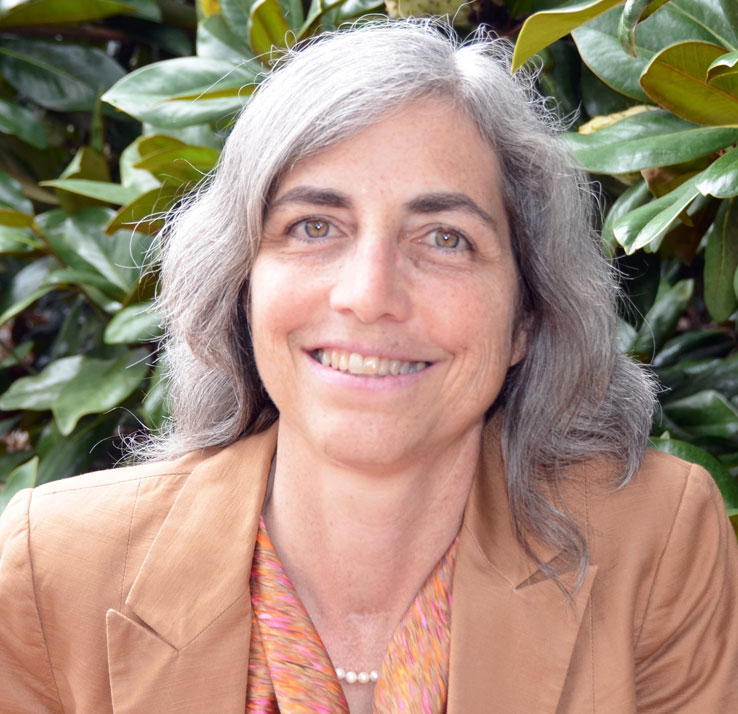
Barbara J. Turpin, PhD
About
Barbara Turpin, PhD, is a professor with over 25 years of experience in aerosol science, atmospheric chemistry and environmental engineering. She combines laboratory experiments, chemical modeling and field research to improve the understanding of linkages between air pollution emissions and human exposures.
Dr. Turpin’s research is designed to reveal fundamental processes needed to accurately predict human exposures and the effects of airborne particles from precursor emissions. She is best known for her work on the formation of organic particulate matter through aqueous chemistry (e.g., in clouds), organic sampling artifacts and modification of the ambient air pollution mix with outdoor-to-indoor transport. She works to facilitate communication between atmospheric, exposure and health scientists with the ultimate goal of effective public health protection.
Barbara Turpin in the Gillings News
- New study shows forever chemicals found in indoor air and in clothes
- Turpin advises on new EPA guidance to protect communities from harmful pollution
- Forever chemicals found in air pollution near Fayetteville manufacturing plant
- National Academies report urges further research on public health impact of wildland-urban fires
- Gillings faculty complete innovative Round 6, COVID-19 GILs
Honors and Awards
Creative Advances in Environmental Sciences and Technology Award
2018, American Chemical Society
Fellow
2014, American Association for Aerosol Research
Fellow
2013, American Geophysical Union
Fellow
2011, American Association for the Advancement of Science
David Sinclair Award for “sustained excellence in aerosol research and technology by an established scientist still active in his/her career"
2010, American Association for Aerosol Research (AAAR)
Haagen Smit Prize
2009
Representative Courses
Engineering Tools for Environmental Problem-Solving (ENVR 205)
Research Activities
Air Quality and Atmospheric Science
Service Activities
- Committee Member, National Academies Committee on the Chemistry of Urban Wildfires, 2021-
- EPA Clean Air Scientific Advisory Committee (CASAC) Particulate Matter Panel, 2016-2019
- Associate Editor, Environmental Science and Technology, 2013 – pres.
- President, American Association for Aerosol Research (AAAR), 2012-2013
- Campus Dean for Undergraduate Education, Rutgers University, 2012-2015
- Member, International Commission for Atmospheric Chemistry and Global Pollution, 2010-2014
- (iCACGP is a Commission of the International Association of Meteorology and Atmospheric Sciences under the International Council for Science)
- Advisory Group, International Agency for Research on Cancer (IARC) Monographs on Air Pollution, WHO, 2004
- Conference Chair, AAAR Annual Conference, 2003
- Board of Directors, AAAR, 1997-2000
Other
- United States Fencing Team, 1989, 1992, National Champion 1992
Key Publications
Organic peroxide and OH formation in aerosol and cloud water: Laboratory evidence for this aqueous chemistry. Lim,* Y.B., Turpin, B.J. (2015). Atmos. Chem. Phys., 15(-), 12867-12877.
Heterogeneity in the fraction of ambient PM2.5 found indoors contributes exposure error and may contribute to spatial and temporal differences in reported PM2.5 health effect estimates. Hodas, N., Lunden, M., Meng, Q. Y., Baxter, L., Ozkaynak, H., Burke, J., Rich, D., Ohman-Strickland, P., Turpin,* B. J. (2012). J. Exposure Sci. Environ. Epidemiol., 22(-), 448-454.
Fine organic particulate matter dominates indoor-generated PM2.5 in RIOPA homes. Polidori, A., Turpin,* B.J., Meng, Q.Y., Lee, J.H., Weisel, C., Morandi, M., Colome, S., Stock, T., Winer, A., Zhang, J., Kwon, J., Alimokhtari, S., Shendell, D., Jones, J., Farrar, C., Maberti, S. (2006). J. Exposure Anal. Environ. Epidemiol., 16(-), 321-331.
Secondary Organic Aerosol Formation in Cloud and Fog Droplets: A Literature Evaluation of Plausibility. Blando, J. D. and Turpin*, B. J. (2000). Atmos. Environ., 34(-), 1623-1632.
Identification of Secondary Organic Aerosol Episodes and Quantitation of Primary and Secondary Organic Aerosol Concentrations During SCAQS. Turpin*, B. J., and Huntzicker, J. J. (1995). Atmos. Environ., 29(-), 3527-3544.
Education
- BS, Engineering and Applied Science, California Institute of Technology, 1984
- PhD, Environmental Science and Engineering, OGI at Oregon Health and Science University, 1990
